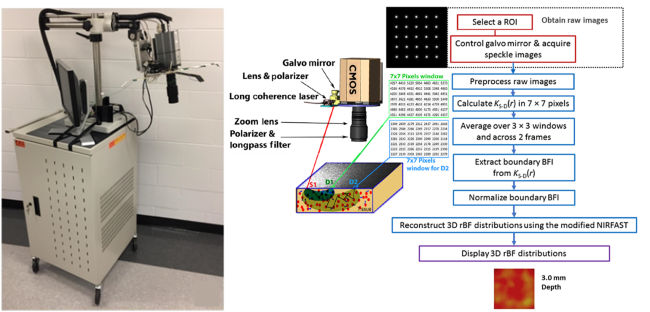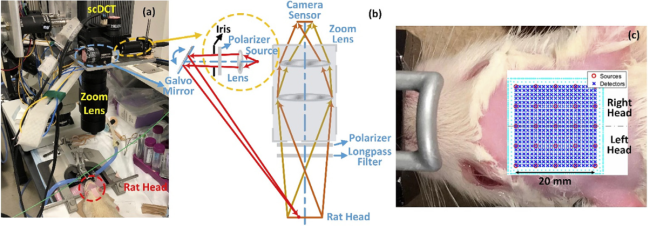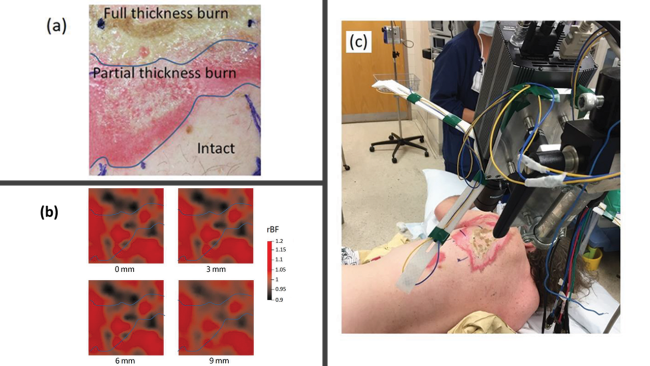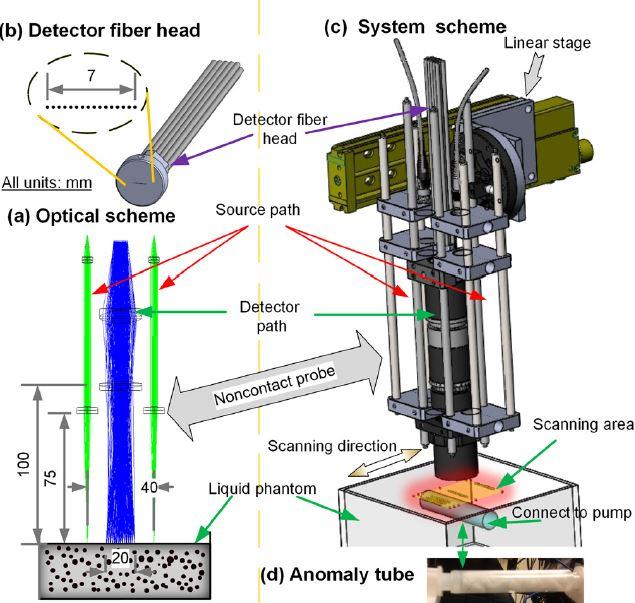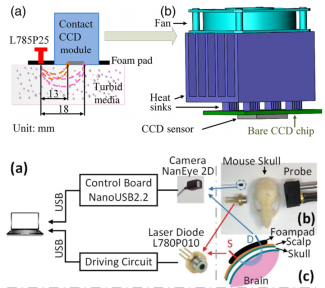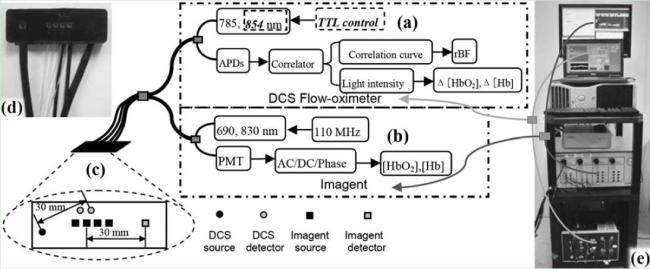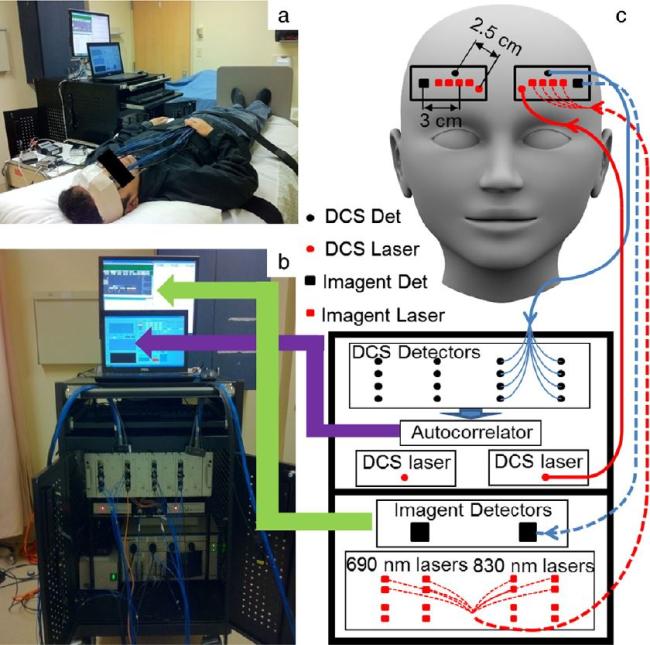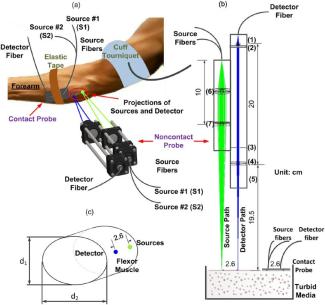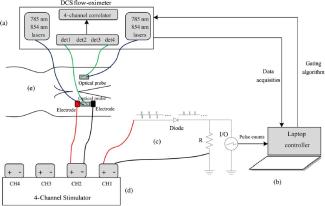We have combined the DCS with a commercial near-infrared spectroscopy (Imagent, ISS, IL) to form a hybrid optical instrument for simultaneous measurements of tissue blood flow and oxygenation. However, the hybrid instruments are still relatively large, complex and expensive. Thus we sought to build and validate a portable, easy-to-use, and inexpensive optical device for bedside monitoring of deep tissue hemodynamics. For this purpose, we added a second laser diode to a portable DCS flowmeter and measured light intensities at two wavele
ngths (785 and 854 nm) to extract tissue oxygenation information. We name this device the “DCS flow-oximeter” as it measures both blood flow and oxygenation (Yu Shang et al, Optics Letters, 2009). More than 10 peer-reviewed papers have been published using this portable device for the monitoring of tissue blood flow and oxygenation changes in brain, muscle, and tumor.
We have used the hybrid instrument (Imagent + DCS) to noninvasively and simultaneously detect low frequency oscillations (LFOs) around 0.1 Hz of cerebral blood flow (CBF) and cerebral oxygenation in human prefrontal cortex (Ran Cheng et al, NeuroImage, 2012, Ran Cheng at al, Journal of Biomedical Optics, 2014). We also tested the feasibility and sensitivity of the dual-wavelength DCS flow-oximeter in patients undergoing carotid endarterectomy (Yu Shang et al, Physics in Medicine and Biology, 2011), in mice with stroke (Yu Shang et al, Optics Express, 2011; Lei Chen et al, Journal of Experimental Stroke and Translational Medicine, 2012).
